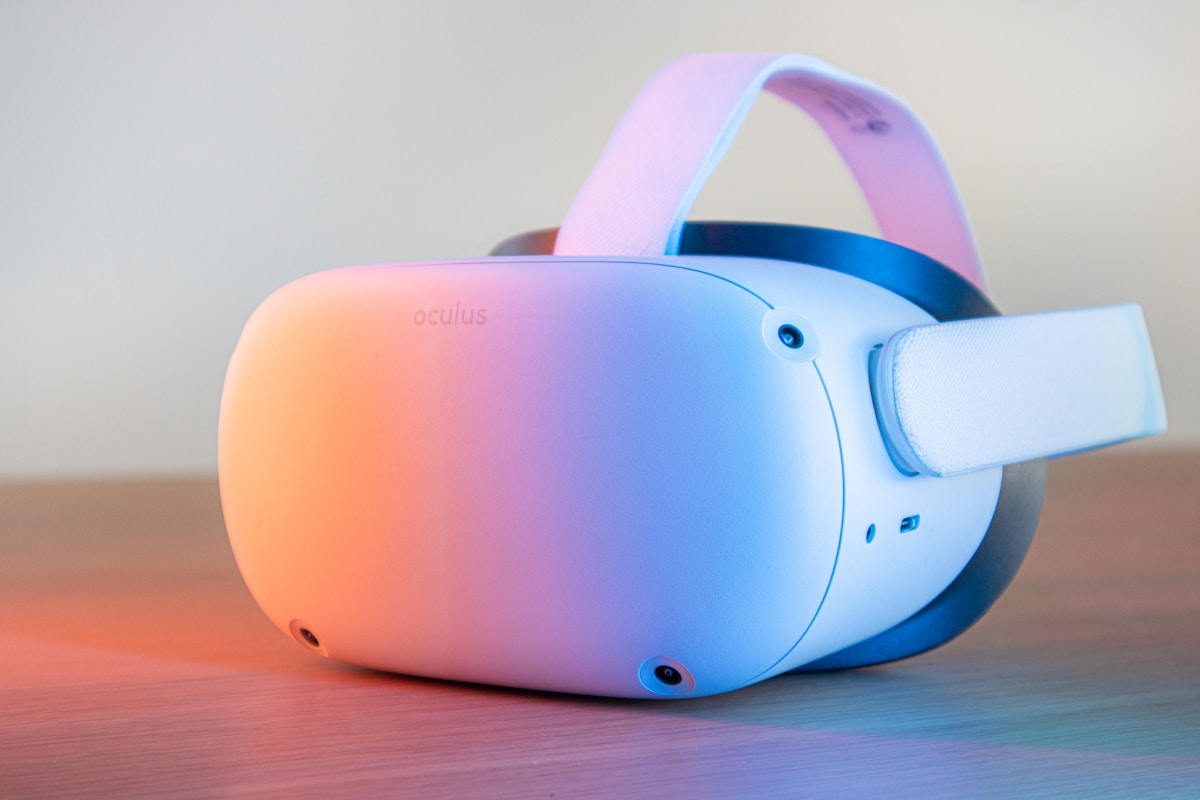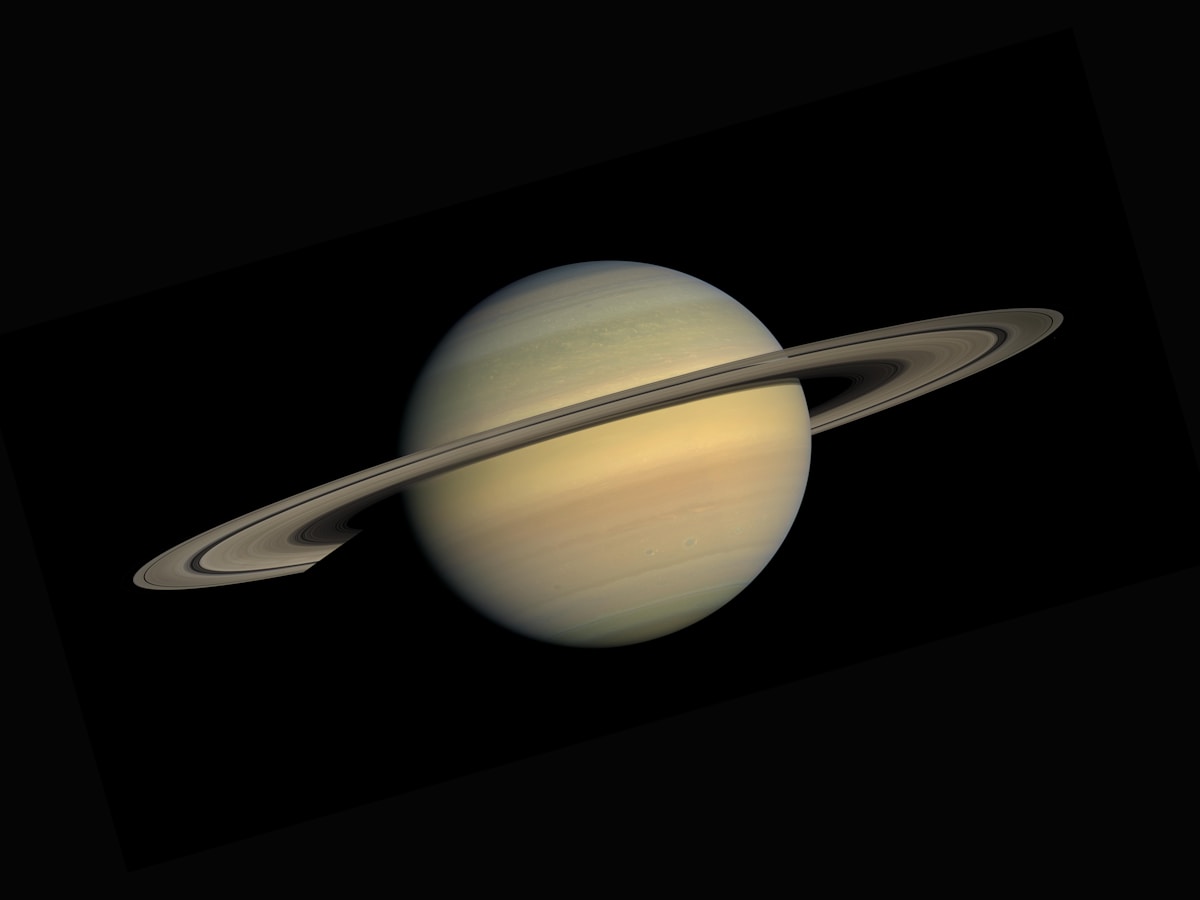
Samsung Project Moohan: Android XR Headset Price, Specs & Release Date Explained
Jean Louis
Samsung Project Moohan specs, price, and release date. First Android XR headset with Google Gemini AI, 4.3K displays. How it compares to Quest 3 and Vision Pro.
If you're wondering what Android XR is, how Project Moohan compares to existing headsets, and whether Samsung can compete with Meta's dominance, this guide breaks down everything we know so far.
- The Product: Samsung Project Moohan, first Android XR headset
- Partnership: Samsung (hardware) + Google (software) + Qualcomm (chips)
- Release Date: 2025 (exact date TBD)
- Expected Price: Over $1,000 (between Quest 3 and Vision Pro)
- Key Specs: Snapdragon XR2+ Gen 2, 4.3K per eye, pancake lenses, color passthrough
- The Big Deal: Google's Gemini AI built into the OS, challenging Meta's Horizon OS
Looking for more VR headset comparisons? Check out our comprehensive guide: Meta Quest 3 vs 3S: Which VR Headset Should You Buy in 2025?
What Is Samsung Project Moohan?
The Basics
Project Moohan (Korean for "infinity") is Samsung's codename for their first mixed reality headset, and the launch device for Google's Android XR platform. Think of it as the "Pixel" of VR headsets—a flagship device showcasing what the new operating system can do.
This isn't Samsung's first rodeo with VR. They previously released:
- Samsung Gear VR (2015-2017): Smartphone-powered VR using Oculus software
- Samsung Odyssey+ (2018): Windows Mixed Reality headset
But Project Moohan is different—it's a standalone headset with its own processing power, no phone or PC required.
The Android XR Platform
Android XR is Google's new operating system designed for both:
- VR headsets (like Project Moohan)
- AR smart glasses (future products)
Key features include:
- Google Gemini AI integration: Built-in AI assistant for contextual help
- Familiar Android UI: If you've used Android phones, you'll recognize the interface
- Google app ecosystem: YouTube, Google Maps, Chrome all optimized for XR
- Circle to Search: Google's AI-powered visual search tool in VR
Think of it as Android for your face—Google's attempt to do for VR what they did for smartphones.
Samsung Project Moohan Specs
Based on the CES 2025 announcement and leaked information, here's what we know:
Display & Optics
- Resolution: 4.3K per eye (approx. 4,300 x 4,300 pixels per display)
- Lens Type: Pancake lenses (thinner, lighter than Fresnel lenses)
- Passthrough: Full-color passthrough for mixed reality
- Field of View: Not officially confirmed, estimated 105-110° (similar to Quest 3)
For comparison:
- Meta Quest 3: 2,064 x 2,208 per eye
- Apple Vision Pro: 3,660 x 3,200 per eye
- Samsung Project Moohan: Higher resolution than Quest, slightly lower than Vision Pro
Processor & Performance
- Chipset: Qualcomm Snapdragon XR2+ Gen 2
- RAM: Likely 12GB (not confirmed)
- Storage: Expected 128GB/256GB options
The Snapdragon XR2+ Gen 2 is the same chip in Meta Quest 3, so performance should be similar:
- 2.5x faster GPU than previous XR chips
- 8x better AI processing
- 50% better power efficiency
Design & Comfort
Based on the prototype shown at CES:
- Form Factor: Rigid headband with forehead rest (similar to PlayStation VR2)
- Battery: Wired external battery pack (not built into headband)
- Weight: Not officially disclosed, but external battery suggests lighter headset
Design choice: Samsung opted for a wired battery rather than Meta's integrated approach. This means:
✅ Pro: Lighter headset, better weight distribution ❌ Con: Tethered to battery pack, less freedom of movement
Tracking & Input
- Hand Tracking: Camera-based hand and finger tracking (no controllers required)
- Eye Tracking: Built-in eye tracking for foveated rendering
- Controllers: Not shown at CES, unclear if Samsung will ship controllers
Unlike Meta Quest 3 which ships with controllers, Samsung seems focused on controller-free interaction via hand tracking and eye gaze.
Android XR vs Meta's Horizon OS: The Battle for VR's Future
Why This Matters
For years, Meta (Facebook) has dominated standalone VR with Horizon OS (formerly Oculus OS). But now Google is challenging them with Android XR, and the stakes are huge:
- App ecosystem: Whoever wins gets the Netflix, Spotify, and YouTube of VR
- Developer mindshare: Developers will build for the most popular platform
- Future AR glasses: The winning VR OS becomes the foundation for AR glasses
Android XR Advantages
1. Google's AI Lead
Gemini AI is baked into Android XR, offering:
- Contextual assistance: Ask "what's this?" while looking at objects
- Real-time translation: Translate text in your field of view
- Smart suggestions: AI recommends apps, content based on what you're doing
Meta has Meta AI, but Google's Gemini is considered more advanced (as of early 2025).
2. Familiar Android Ecosystem
Billions of people use Android phones. Android XR lets developers:
- Port existing Android apps with minimal changes
- Reuse Android development tools (Android Studio, Kotlin, etc.)
- Leverage Google Play Store infrastructure
Meta's Horizon OS requires learning a new platform.
3. Google's Services
Android XR ships with:
- YouTube VR: Already the most popular VR video app
- Google Maps AR: Navigation in mixed reality
- Chrome browser: Full web browsing in VR
These are already industry-leading apps. Meta has to build equivalents from scratch.
Meta's Horizon OS Advantages
1. First-Mover Advantage
Meta has been in VR for 10+ years:
- Quest 3 is proven: 20+ million Quest headsets sold
- Mature app store: Thousands of VR-native apps
- Developer relationships: Epic Games, Ubisoft, EA already build for Quest
Google is starting from zero.
2. Lower Prices
- Meta Quest 3S: $299
- Meta Quest 3: $499
- Samsung Project Moohan: Expected $1,000+
Meta can afford aggressive pricing because they monetize via ads and data. Samsung/Google need to profit on hardware.
3. VR-First Design
Horizon OS was built for VR from the ground up. Android XR is adapting a phone OS for headsets.
Meta's OS feels more polished for VR tasks like:
- Multitasking with virtual windows
- Social VR (avatars, multiplayer)
- Hand tracking (Meta has 5+ years of refinement)
Samsung Project Moohan Price: What to Expect
Samsung hasn't announced official pricing, but we can make educated guesses:
Price Prediction: $999-$1,299
Why we think this:
-
Qualcomm CEO hint: Qualcomm's CEO said Android XR devices will be priced between Quest 3 and Vision Pro
- Quest 3: $499
- Vision Pro: $3,499
- Middle ground: $1,000-$1,500
-
Premium positioning: Samsung is targeting enterprise and early adopters, not mass market
-
Component costs: 4.3K displays + Snapdragon XR2+ Gen 2 + eye tracking = expensive bill of materials
Price Comparison Table
| Headset | Price | Resolution Per Eye | Standalone? | |---------|-------|-------------------|-------------| | Meta Quest 3S | $299 | 1,832 x 1,920 | ✅ Yes | | Meta Quest 3 | $499 | 2,064 x 2,208 | ✅ Yes | | Samsung Project Moohan | $999-$1,299 (est.) | 4,300 x 4,300 | ✅ Yes | | Apple Vision Pro | $3,499 | 3,660 x 3,200 | ✅ Yes |
Value proposition: Project Moohan aims to offer Vision Pro-level displays at half the price.
Release Date: When Can You Buy It?
Official Timeline
Samsung and Google said "2025" without specifics. Based on industry patterns:
Most likely: Q3 2025 (July-September)
Why we think this:
- CES announcement (January 2025): Typically products announced at CES ship 6-9 months later
- Android XR OS maturity: Google needs time to finalize the platform
- Developer support: Third-party apps need to be ready at launch
Optimistic scenario: Q2 2025 (April-June) Conservative scenario: Q4 2025 (October-December) for holiday shopping
Pre-Orders
No pre-order information yet. Samsung will likely announce:
- Official name (drop "Project Moohan" codename)
- Final price
- Pre-order date
- Launch lineup of apps
Our guess: Pre-orders open 2-4 weeks before official launch, similar to Galaxy phone releases.
Samsung Project Moohan vs Meta Quest 3
Which Should You Buy?
Here's how they compare:
| Feature | Samsung Project Moohan | Meta Quest 3 | |---------|----------------------|--------------| | Price | ~$1,000+ (estimated) | $499 | | Resolution | 4.3K per eye | 2,064 x 2,208 per eye | | Processor | Snapdragon XR2+ Gen 2 | Snapdragon XR2+ Gen 2 | | OS | Android XR (Google) | Horizon OS (Meta) | | AI Assistant | Google Gemini | Meta AI | | App Ecosystem | New (launching 2025) | Mature (1,000+ apps) | | Controllers | Hand tracking (no controllers shown) | Touch Plus controllers included | | Best For | Productivity, media, Google ecosystem fans | Gaming, social VR, budget buyers |
Buy Meta Quest 3 if:
- You want to play VR games now (Beat Saber, Asgard's Wrath 2, etc.)
- Budget is a priority
- You want a proven ecosystem
Buy Samsung Project Moohan if:
- You want the sharpest displays under $1,500
- You're deep in Google's ecosystem (Android phone, Gmail, YouTube Premium)
- You prioritize productivity and media over gaming
- You can wait until mid-2025
What This Means for the VR Industry
Google's Return to VR/AR
Google has tried VR/AR before:
- Google Cardboard (2014): Budget VR, discontinued
- Google Daydream (2016): Smartphone VR, discontinued 2019
- Google Glass (2013): AR glasses, failed commercially
Why Android XR might succeed this time:
- Better hardware partners: Samsung, not just Google
- AI advantage: Gemini AI is a killer feature
- Timing: VR/AR market is finally mature (20M+ Quest users)
Pressure on Meta
Meta's Quest dominance is being challenged:
- Samsung Project Moohan (Android XR) from Google
- Apple Vision Pro from Apple
- Valve Steam Frame rumored for late 2025
For the first time since 2020, Meta faces serious competition in standalone VR.
Meta's response options:
- Lower Quest 3 prices to maintain market share
- Accelerate Quest 4 development
- Open-source Horizon OS (rumored) to compete with Android XR
Developers Win
Competition means:
- Better tools: Google and Meta will improve SDKs to attract developers
- Cross-platform engines: Unity/Unreal will support both platforms
- More funding: Google and Samsung will pay developers to build launch titles
Frequently Asked Questions
Is Project Moohan available to buy now?
No. It's currently a prototype. Samsung expects to launch in 2025 with an official product name and pricing.
Will Project Moohan work with Meta Quest games?
No. Android XR and Horizon OS are separate platforms. Apps must be ported to run on both.
However, many popular apps (YouTube VR, Netflix, etc.) will likely support both platforms.
Does Samsung Project Moohan require a phone?
No. It's a standalone headset with built-in processing. Unlike Samsung's old Gear VR, no phone needed.
Can you use Project Moohan for gaming?
Yes, but the gaming library will be limited at launch. Most VR games are on Meta Quest or PC VR (Steam). Developers will need time to port games to Android XR.
Will Google make their own VR headset?
Not announced. Google is focusing on the software (Android XR OS). Samsung handles hardware. However, Google might release their own headset in 2026+ (similar to how they make Pixel phones despite Android licensing).
What does "Moohan" mean?
"Moohan" (무한) is Korean for "infinity" or "limitless". It's a codename—the final product will likely have a different name (e.g., "Samsung Galaxy VR" or similar).
The Bottom Line: A Serious Meta Quest Challenger
Samsung Project Moohan represents Google's most serious attempt yet to compete in VR/AR. By partnering with Samsung's hardware expertise and Qualcomm's chips, Google has a real shot at building an ecosystem to rival Meta's Horizon OS.
For consumers, this is great news:
- More competition = better products at lower prices
- Google's AI pushes Meta to improve Meta AI
- Choice matters: No longer Meta-or-nothing for standalone VR
For Meta, this is a wake-up call:
- Quest's dominance isn't guaranteed
- Apple Vision Pro attacks from above ($3,499), Samsung from the middle ($1,000+)
- Meta must keep innovating to stay ahead
For the VR industry, this is the turning point:
After years of Meta's near-monopoly, 2025 is the year VR becomes a multi-platform ecosystem—just like smartphones evolved from iPhone-only to iOS vs Android.
The question isn't whether Samsung Project Moohan will succeed, but whether Google can finally stick with a VR platform long enough to make it work. Their track record (Cardboard, Daydream, Glass) isn't encouraging.
But with Samsung, Qualcomm, and Gemini AI behind them? This might be the time Google gets VR right.
We'll be tracking every update. Stay tuned for hands-on reviews, price announcements, and release date confirmations as Samsung and Google share more details throughout 2025.
Related Articles

How to Play PC Games on Meta Quest 3: Complete Guide (Steam Link, GeForce NOW XR & Virtual Desktop)
Play PC games on Meta Quest 3 using Steam Link, GeForce NOW XR, or Virtual Desktop. Complete 2025 guide with setup steps, performance tips, and comparisons.

NVIDIA GeForce NOW XR: Stream AAA PC Games to Meta Quest 3 & Apple Vision Pro
NVIDIA GeForce NOW XR launches January 2025. Stream 1,000+ PC games to Meta Quest 3 and Apple Vision Pro—no gaming PC required. Pricing and setup guide.

Best Tech Gadgets of 2025: From Smart Glasses to Folding Phones
Discover the 17 best tech gadgets of 2025 including folding smartphones, AI-powered wearables, smart home devices, and affordable smartwatches. Complete buying guide with pros, cons, and real-world testing from Motorola Razr Ultra to Google Pixel 9a.
Written by
Jean Louis
Tech enthusiast and professional developer sharing insights on modern web development.
Comments (0)
Join the discussion and share your thoughts
You must be logged in to post a comment.
Sign In to CommentNo comments yet. Be the first to share your thoughts!